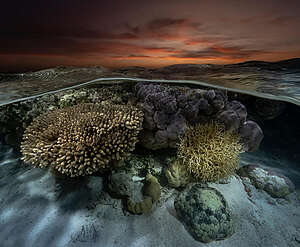Woodside’s Burrup Hub is an irredeemable threat to WA’s oceans and marine life. It’s also the biggest fossil fuel threat in Australia and the fifth most polluting gas project in the world.
The Burrup Hub project is what Woodside calls its plan to drill the Scarborough gas field (which is already well under construction), drill the Browse gas field underneath Scott Reef and extend the life of a massive gas plant called the North West Shelf LNG Plant, which processes gas for export.
The Burrup Hub represents an irredeemable threat to Western Australia’s marine life – putting 54 threatened species and up to 12 marine parks at risk. But the destruction won’t end there – the project will emit over 6.1 billion tonnes of greenhouse gas emissions. Most of the gas from the Burrup Hub will be sold overseas.
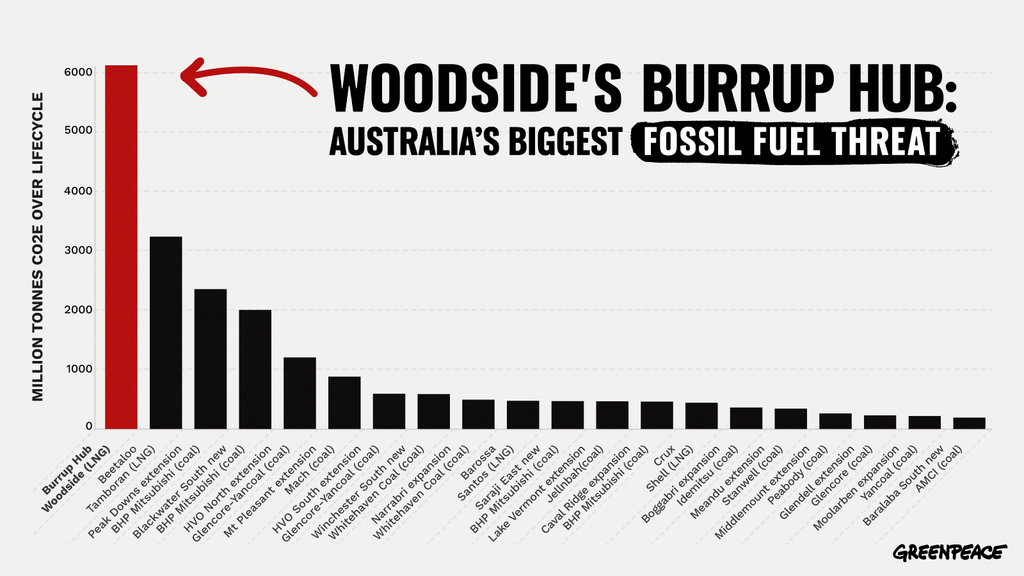
Greenpeace Australia Pacific has been working for over 2 years to stop the Burrup Hub – it is Australia’s biggest climate threat, and poses catastrophic risks to the pristine environment of WA.
The story so far
Fossil fuel company Woodside has had its sights set on the Browse gas field for a long time. The company’s first attempt to drill it was defeated by a huge community campaign centred in the Kimberley in northern Western Australia. Then in 2019, Woodside was back – this time with a plan to pipe the Browse gas onshore to its existing LNG processing plant, extending its life until the 2070s.
The first stage of Woodside’s Burrup Hub, Scarborough, is under construction, with 30 gas wells being drilled off the coast of Exmouth, WA. Woodside has risked killing whales by deafening them with seismic blasting, dug up endangered turtle habitat, and when it is complete, Scarborough puts UNESCO-protected Ningaloo Reef within the danger zone for an oil spill.
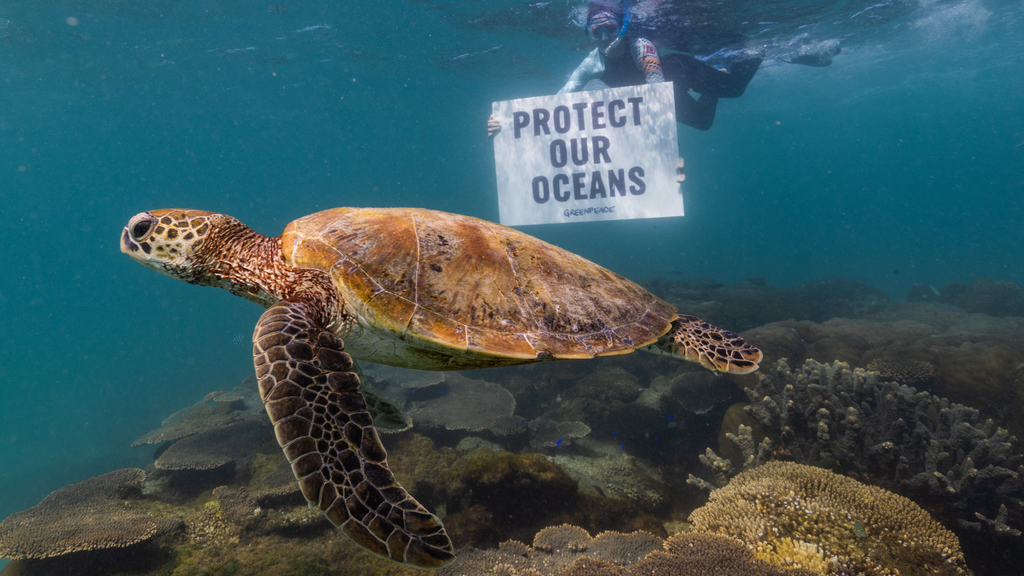
Now, Woodside is proposing the next stage of the Burrup Hub: up to 50 more gas wells to be drilled around Scott Reef. The closest well will be just over 2km from the edge of the reef, with Woodside planning to extract gas from directly underneath the coral reef. The void left after removing the gas is likely to cause the reef to sink.
Scott Reef is a globally significant marine ecosystem, home to hundreds of species, including sea snakes, sharks, rays and sawfish. It provides critical habitat to endangered pygmy blue whales and vulnerable green turtles.
The new gas from Browse needs to be processed before it can be sent overseas. So, Woodside hopes to extend the life of its ageing North West Shelf LNG plant until the 2070s.
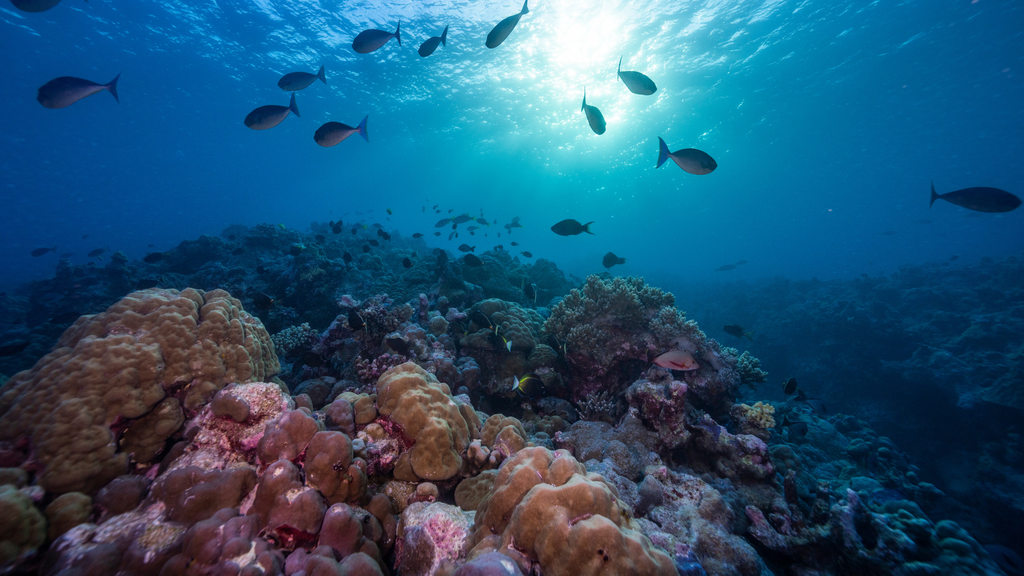
Woodside Has Not Won Yet
While Scarborough is currently being drilled, Woodside needs environmental approvals from Federal Environment Minister, Tanya Plibersek, and WA Environment Minister, Reece Whitby, to drill for new gas at Browse and extend the life of the North West Shelf LNG Plant.
Despite the accelerating climate crisis and Australia’s commitment to phase out of fossil fuels, projects like the Burrup Hub can still be approved because Woodside only needs to account for emissions on Australian territory. Because Woodside would sell over 80 per cent of the gas it drills from the Burrup Hub overseas (most of it royalty-free), it doesn’t need to include the emissions from gas burnt outside Australia when getting environmental approvals.
An industry source has confirmed to the media that Western Australia’s Environmental Protection Agency (EPA) has essentially written off the company’s Browse project as too dangerous to proceed. This almost never happens under our current environmental and climate laws. These revelations make clear what we’ve long known to be true—that Woodside’s disastrous Burrup Hub project, including its Browse site, is likely to be a disaster for our precious environment, our reefs and threatened species.
Almost half a million Greenpeace supporters have signed our petition calling on Minister Plibersek to rule out the project, and the chorus against the Burrup Hub project is growing stronger every year.
And here is how we win
There is a clear path to stopping mega gas projects like the Burrup Hub – using the Federal environmental protections we do have in place, which protect ‘unique plants, animals, habitats and places’, to stop Woodside’s plans.
There are also state laws in WA that protect the environment. The WA EPA has stated they have serious concerns about Browse, and their view is that it poses an ‘unacceptable’ risk to the environment.
That is why Greenpeace AP is doing everything we can to document the pristine biodiversity of Scott Reef, showing just how critical it is to protect our unique oceans and marine life.
The Environment Ministers in Perth and Canberra need to hear how much Australians value our natural environment and want it protected. Without public outcry, the only voices politicians hear is Woodside and the fossil fuel lobby, who seek to downplay and minimise the environmental threat of offshore gas drilling.
Marine scientists, NGOs and Greenpeace have examined Woodside’s proposal closely and have identified several severe threats to our environment that could convince the Minister to say ‘no’ to the Burrup Hub on environmental grounds. The risks include:
- The sinking of Scott Reef into the ocean (because the gas is extracted from underneath it) causing turtle nesting grounds to wash away;
- Underwater noise pollution impacting whale foraging and migration;
- Chemical dumping from the construction phase and production rigs poisoning plankton, fish and marine turtles;
- Artificial lighting and flaring (burning off released gas) disorientating turtle hatchlings and sea birds
- A gas and oil spill, covering Scott Reef and surrounding marine parks in condensate, creating an environmental catastrophe.
The decision of our Governments to approve or reject the Burrup Hub project will define their environmental legacy for decades to come.
Burrup Hub: Irredeemably Bad
While the federal government made a disappointing commitment to continue approving fossil gas drilling when it released its gas strategy, the Burrup Hub is in its own category of ‘bad’, because:
- Scott Reef is a pristine and idyllic coral atoll teaming with marine life and providing critical habitat for threatened species;
- The Burrup Hub’s Browse project is an enormous new and exceptionally dirty gas field;
- Most of the gas will be sold overseas, royalty-free;
- The community in WA are rallying against the project to protect our oceans; and
- The Government wants to invest in a future made in Australia using clean energy, not lock Australia into gas until 2070.
But to defeat Woodside’s expensive PR and army of lobbyists, we need to use people-power to show our Government that Australians are united behind one message: we must protect our environment from the Burrup Hub mega gas project.
What is next for Greenpeace
The news that the WA EPA agrees that Browse is a uniquely terrible idea has, quite literally, added wind in the sails of our campaign to Stop Woodside.
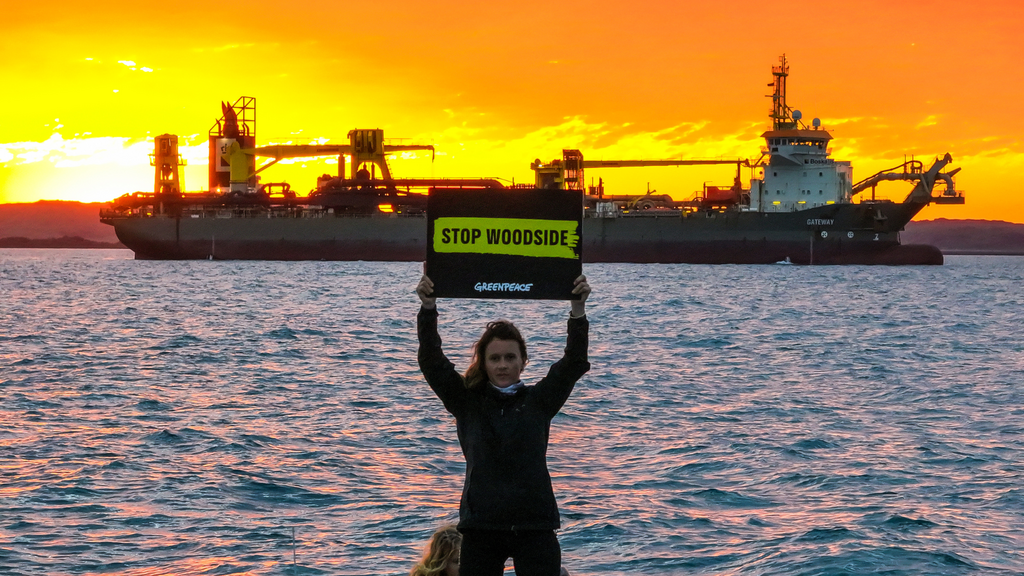
Right now, our new campaign vessel, the Oceania, is on its way to Western Australia, where we will be connecting with the growing community who oppose Woodside’s disastrous Burrup Hub, and amplifying their calls to stop this monstrous project.
In Canberra, we will be taking the voices of the almost half a million Australians who have signed our petition to stop the Burrup Hub directly to Parliament. We will send a message to our elected leaders, loud and clear, that Australians reject Woodside’s Burrup Hub.
Defeating the Burrup Hub would be one of the single most effective things we can do to fight for a safer climate, and a thriving environment.
Will you help?

